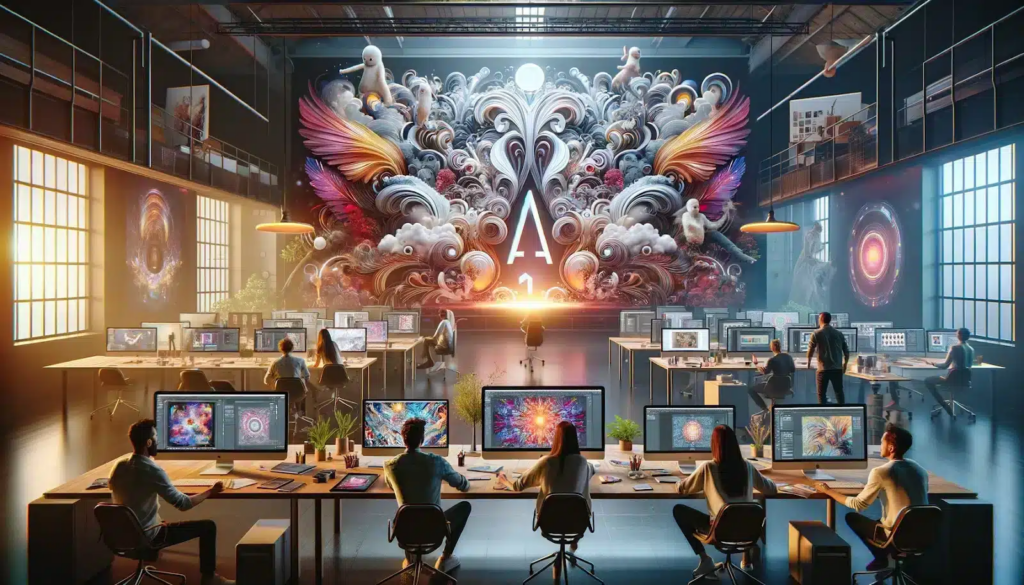
Artificial Intelligence (AI) has emerged as a new collaborator for creativity in the digital age. AI has completely changed the creation and manipulation of images, from improving photographs to producing inventive or hyper-realistic artwork. AI image generators can help you realize ideas more quickly and creatively than ever before, regardless of your background—designer, marketer, blogger, or hobbyist.
This article will go over how AI picture production operates, the top tools available, useful advice for producing high-quality photographs, and how to use them in your projects in an ethical and efficient manner.
What Is AI Image Generation?
AI picture generation is the process of creating new images or improving ones that already exist using machine learning techniques, particularly generative models like diffusion models and GANs (Generative Adversarial Networks). These tools learn how to recreate or creatively combine visual patterns by analyzing large datasets of real-world photographs.
Current models are able to produce:
- Extremely lifelike images of humans who don’t exist
- Sci-fi photography, fantasy landscapes, and concept art
- Mockups of custom products
- Art forms such as anime, pencil sketches, and oil paintings
- Converting basic descriptions into images
These days, users may describe a scene in plain language and have it visually reproduced in a matter of seconds with tools like DALL·E, Midjourney, and Stable Diffusion.
Popular AI Tools for Generating Images
1. DALL·E by OpenAI :
- Transforms written prompts into creative or realistic visuals.
- Excellent in adhering to specific objects, styles, and details.
- Beneficial for narrative visuals and imaginative designs.
2. Midjourney :
- Renowned for its incredibly creative and fantastical style.
- Well-liked by artists and designers for styled pictures.
3. Stable Diffusion :
- Open-source and very adaptable.
- Permits fine-tuning and local installations.
- Ideal for developers and anyone who desire complete control.
4. Adobe Firefly :
- Outstanding for design jobs such as generative fill, image recoloring, and text effects.
- Using Adobe’s stock data, it was constructed with commercial safety in mind.
5. Canva AI / Magic Media :
- AI is able to immediately create and modify images in drag-and-drop design layouts.
- User-friendly and ideal for social media graphics or marketing creatives.
How to Create Stunning AI-Generated Images: Step-by-Step
Using AI to create a stunning visual involves more than just entering a sentence and selecting “Generate.” It’s about correctly directing the AI. Here’s the proper way to accomplish it:
Give a clear prompt first :
The key is a good prompt. The more detailed and detailed you are, the better the outcome will be.
The weak prompt is “A city.”
Strong prompt: “A nighttime, futuristic, neon-lit city with flying cars and tall skyscrapers, reminiscent of Blade Runner, with intricate details and dramatic lighting.”
Choose the Right Tool for the Job :
Each tool has a different visual signature:
- For surreal, painterly results: Midjourney
- For realism and fine-tuned design: DALL·E
- For experimentation and control: Stable Diffusion
Experiment with Variations :
After generating an image, use the tool’s built-in variations or rerun your prompt with tweaks. Try changing:
- The time of day
- The style (switch from oil painting to pencil sketch)
- The perspective (top view, close-up, wide angle)
Upscale and Enhance :
The resolution of many AI-generated photos is lower. Tools such as Let’s Enhance, Topaz Gigapixel, or integrated upscalers can sharpen images and prepare them for printing or the web.
Edit and Finalize :
AI outputs can occasionally be 90% accurate. Utilize Figma, Canva, or Photoshop to:
- Eliminate extraneous components
- Modify the brightness and color.
- Include overlays or text.
- Consolidate several pictures into one.
Ethical Considerations
- Respect Copyrights
- Avoid Deepfakes and Misinformation
- Credit the Tools
- Check Commercial Usage Rights
Tips to Take Your AI Image Generation to the Next Level
Become a Member of AI Art Communities: Examples and inspiration abound on Reddit’s r/aiArt and Midjourney’s Discord services.
Learn Prompt Engineering: Improving prompt writing, or “prompt engineering,” produces noticeably improved results.
Combine with Photography or Design: To create distinctive hybrids, overlay AI art over actual photos or combine it with vector components.
Use Seeds and Parameters: To replicate or improve an image, you can set a “seed” in some programs. Find out what settings your tool is compatible with.
Maintain a Prompt Journal: Record prompts and outcomes to see what works and create your own collection of AI images.
AI-generated graphics is a creative revolution rather than merely a fad. You can transform ideas into pictures, concepts into engaging visuals, and words into worlds with the correct prompts, resources, and creativity.
AI may boost your workflow and open up a new realm of artistic expression, regardless of your level of experience as a designer or your level of creativity exploration. To produce genuinely amazing photographs, you must approach AI as a creative collaborator by carefully guiding it, iterating often, and adding your human touch.